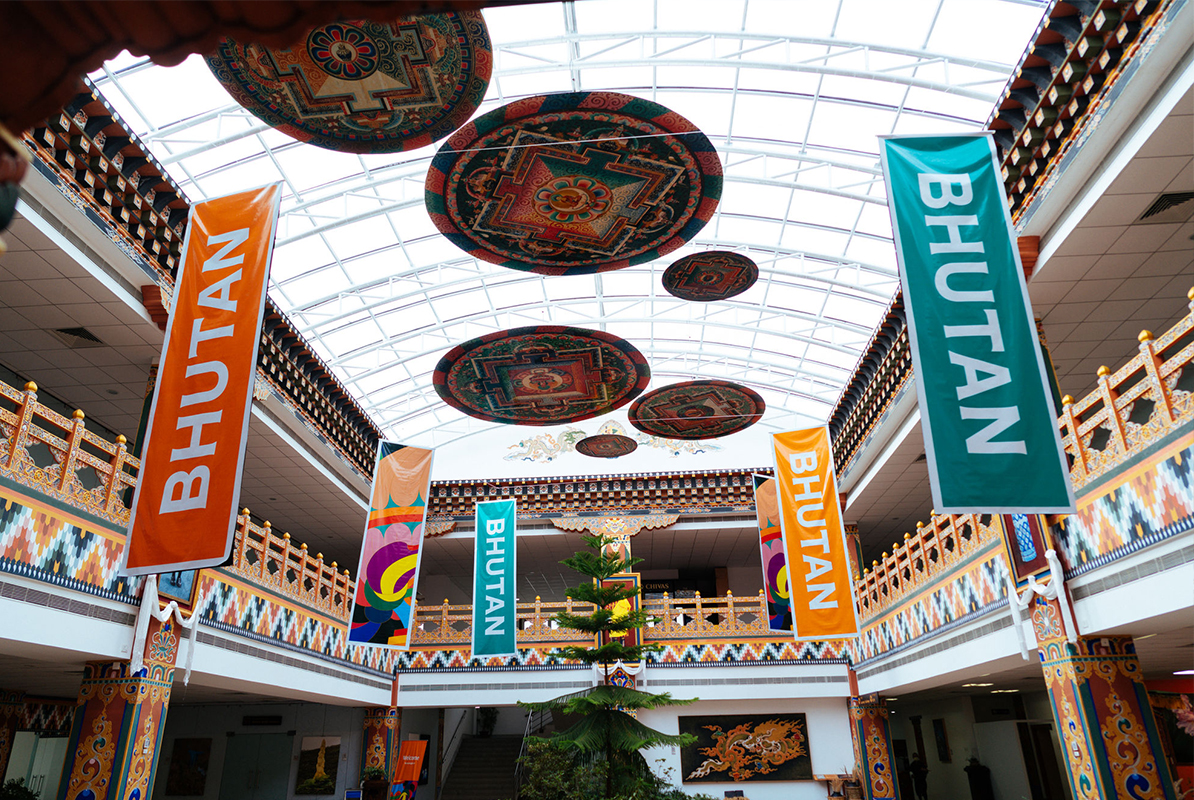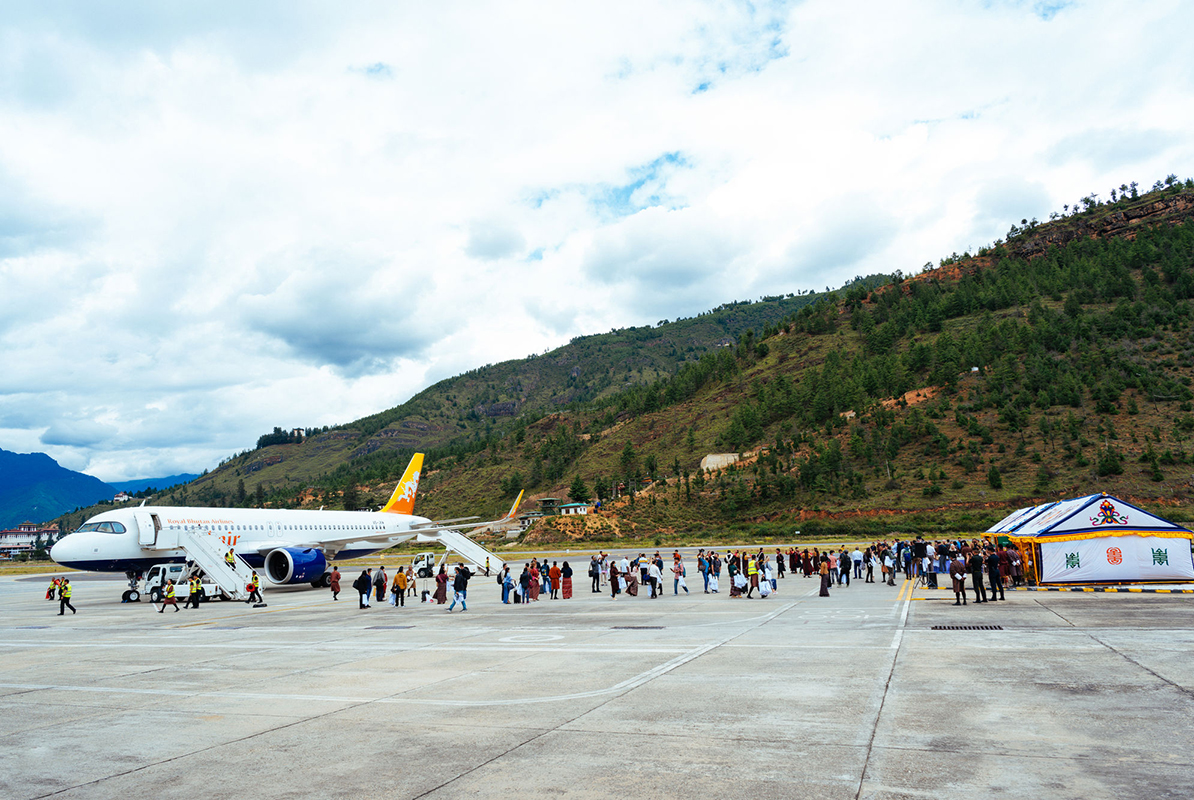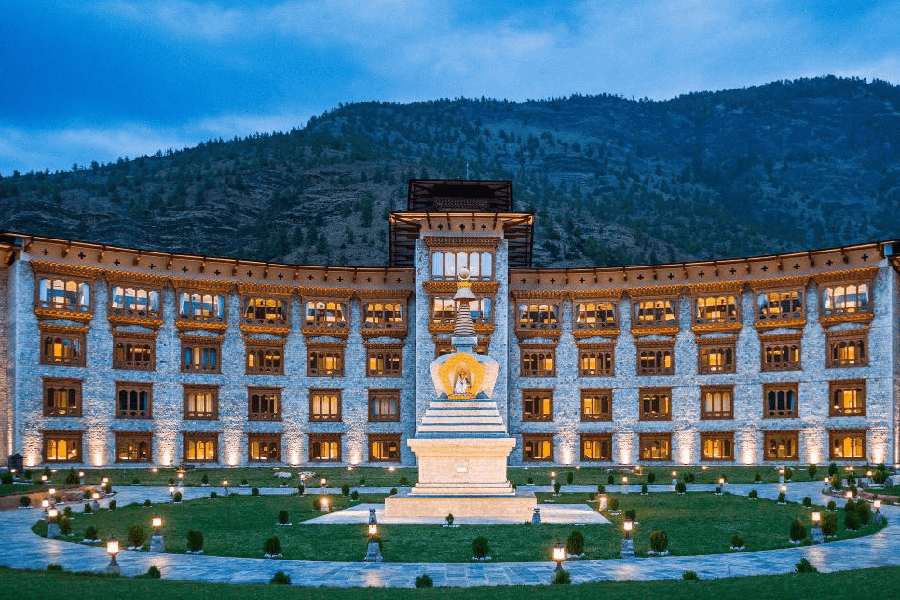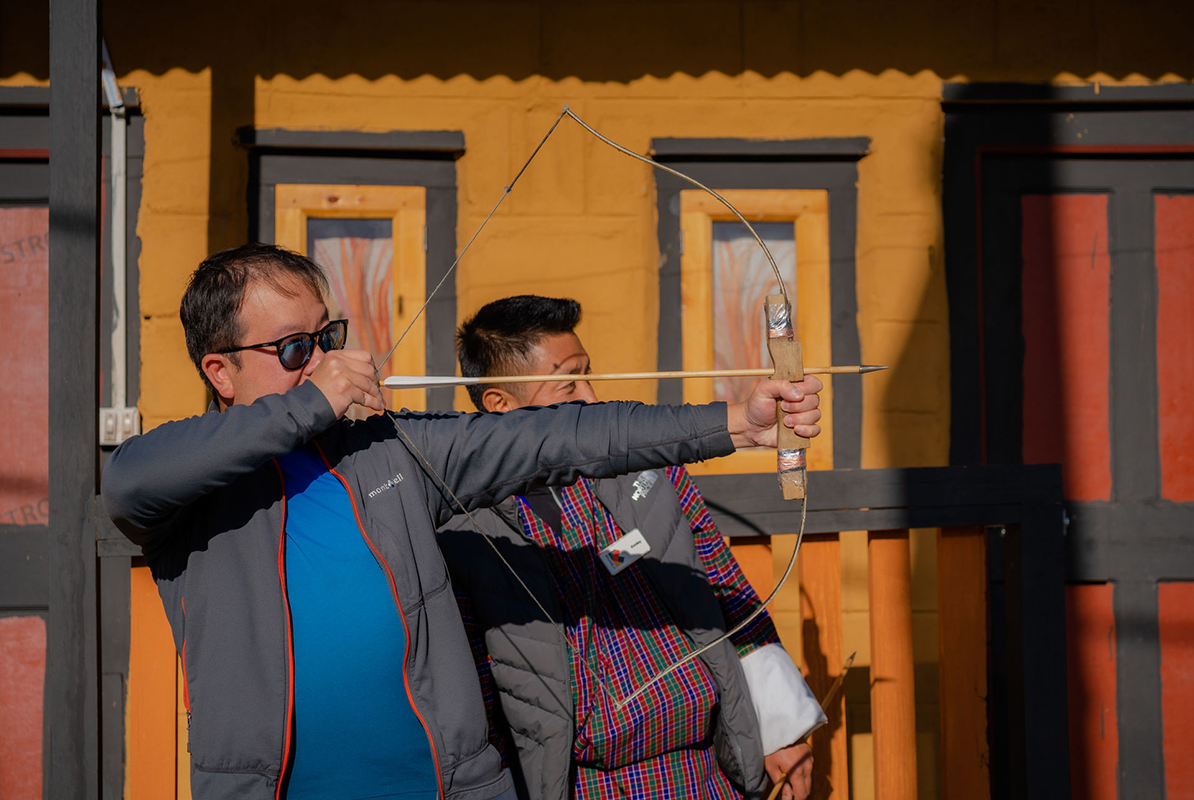-
Tiger’s Nest Monastery (Paro Taktshang)
Rising 900 meters above the valley floor and perched on a vertical cliff, the Tiger’s Nest Monastery is one of Bhutan’s most iconic religious site. Guru Padmasambhava, the eighth century tantric master who introduced buddhism in Bhutan is said to have flown on the back of a tigress to the site to meditate. Located in Paro in Western Bhutan, the monastery draws hundreds of tourists and pilgrims from the around the world every day.
-
Punakha dzong
One of the oldest dzongs (fortress) in the country built by Zhabdrung Ngawang Namgyel who unified the country in the 17th century, the Punakha dzong is said to have been built by an architect who accompanied the Zhabdrung to Guru Padmasambhava’s paradise in his vision to copy the design for the dzong. It is a piece of heaven on earth, flanked by the male and female river. Punakha used to be the medieval capital of Bhutan and the site of some of the most fierce battles between Bhutan and Tibet.
-
Buddha Dordenma statue
Overlooking the Thimphu valley, the Buddha Dordenma statue is one of the largest statues of Shakyamuni Buddha in the world with a height of 169 feet. It houses more than one hundred thousand smaller buddha statues which are made of bronze and gilded in gold. The statue was constructed to fulfil a prophecy and a means to bring world peace.
-
Phobjikha valley
A wetland of international importance, the winter roosting ground of the black necked crane and one of the most scenic valleys in the country, Phobjikha, located in Wangdue Phodrang in western Bhutan is a place out of this world.
-
Chorten kora
Built in the 1700s, the legendary Chorten Kora is a stupa modelled on the Boudhanath stupa in Nepal. During its construction, an eight year old Dakini girl is said to have been voluntarily sealed alive inside the stupa. The stupa is revered across the country as well as by the people of Tawang in Arunachal Pradesh. The Dakpas from Arunachal Pradesh visit the chorten every year for circumumbalutation.
-
Thimphu Memorial chorten
Built in 1974 in memory of Bhutan’s Third King, Jigme Dorji Wangchuck, who is referred to as the Father of Modern Bhutan, the memorial chorten, located in the centre of Thimphu, the capital city is one of the most prominent landmark in the Thimphu. Hundreds of Bhutanese can be seen circumambulating the chorten every day.
-
Museum of Natural History, Paro
Built in the shape of a conch, the Paro Ta Dzong (Watch Tower) was initially built in 1649 to defend the Paro Rinpung Dzong from Tibetan invasions. Today the watchtower is the national museum of Bhutan. The museum houses stone age tools, a thangka gallery and a royal gallery. One of the highlights of the museum is a stone egg said to have been laid by a mule.
-
Dochula pass
A mountain pass located between Thimphu and Punakha, Dochula (3,100 masl) offers a panoramic view of the greater himalayas. It is a great spot for photography. Bhutan’s queen mother Dorji Wangmo Wangchuck built 108 chortens (stupas) in honour of the fourth king. The annual Druk Wangyal Tshechu (festival) mask dances are performed by the Royal Bhutan Army.
-
Institute of Zorig Chusum (Thirteen arts and crafts of Bhutan)
In the institute of zorig chusum located in Thimphu, students specialise in the 13 traditional art and crafts of Bhutan. They include painting, woodcarving, embroidery and statue making. Tourists can visit the institute, observe the skill and talent of the students engaged in the 13 crafts and also take photos.
-
Trong heritage village
A unique nucleated village that echoes the medieval history of Bhutan, the Trong Heritage village in Zhemgang in central Bhutan featured in a hollywood movie, The Secrets of Dumbledore. Houses in the village are made entirely of stone with a cobbled path runnig in the middle. The village was recognised as a heritage site in 2014.
-
The Royal Textile Academy
The royal textile academy trains individuals in traditional Bhutanese weaving. It preserves and promotes the art of weaving, which is an important part of Bhutan’s culture. Visitors can observe the beautiful textiles of Bhutan on display.
-
Drukgyel dzong
The fortress of the glorious drukpas, the Drukgyel Dzong was built in the 17th century by Zhabdrung Ngawang Namgyel, who unified Bhutan, to defend the country from Tibetan invasions. Located on a ridge in the upper Paro valley, the dzong served as a strategic defence fort for Bhutan. The dzong suffered a major fire in 1951 after which it remained in ruins until 2016 when His Majesty the King initiated its reconstruction.
-
Postal Museum
Established in 2015, the Bhutan Postal Museum narrates the story of the evolution of communication, transportation and postal services in Bhutan. It houses various collections of anecdotes, artifacts and a rich assortment of stamps the country has produced over the years.



